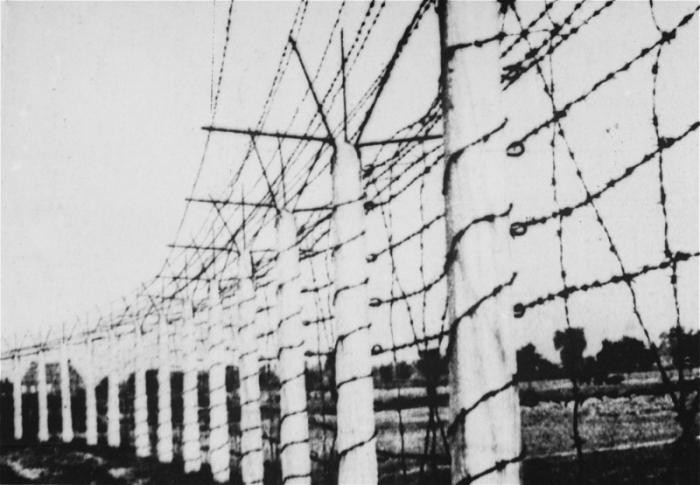
Breendonk
The Breendonk internment camp was located in a Belgian fortress built in the beginning of the twentieth century along the Antwerp-Brussels highway. Originally one in a chain of fortresses constructed to defend Belgium against a German attack, Breendonk was near the town of the same name, about 12 miles southwest of Antwerp. It was surrounded by high walls and a water-filled moat, and measured 656 by 984 feet. In August 1940, the Germans, who had occupied Belgium in May of that year, turned the fortress into a detention camp.
Fewer than 4,000 prisoners in total were confined in Breendonk during its existence. Most of the non-Jewish prisoners were leftist members of the Belgian resistance or were held as hostages by the Germans. Several hundred people were murdered in the camp through torture, executions, and harsh conditions. In September 1941, the Belgian Communist prisoners were sent to the Neuengamme concentration camp.
Jewish prisoners in Breendonk were segregated from other prisoners until 1942. Thereafter, they were transferred to the Mechelen (Malines) transit camp in Belgium, or deported to the Auschwitz-Birkenau killing center in Nazi-occupied Poland.
With Allied forces approaching the camp, the Germans evacuated Breendonk in August 1944. The remaining prisoners were transferred to the Mechelen camp and then deported to camps in Germany and occupied Poland.
Critical Thinking Questions
- Learn about other internment camps. How were internment camps different from other types of camps?
- Did the outside world have any knowledge about these camps? If so, what actions were taken by other countries and their officials? What choices do other countries have in the face of mistreatment of civilians?
- How does the example of this camp demonstrate the complexity and the systematic nature of the German efforts to abuse and kill the Jews?

